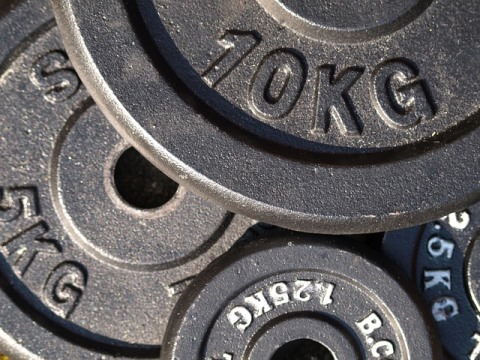
I met a patient recently who made an appointment because she was concerned about her BMI (body mass index). As she pushed up her sleeve so I could take her blood pressure, I was impressed with her biceps. “Nice guns”, I said. “You think so? I work out with a trainer,” was her reply. As we looked at her body composition (measuring muscle mass and adipose [fat] tissue), a good percentage of her weight was muscle. I explained that if she were to lose weight, I definitely would not want it to be from the muscle she had worked so hard to build. In fact, I encouraged her to continue with exercise in hopes of building more. This would be especially important for her because she is in her 70’s.
Sometimes it seems counter-intuitive when I ask my patients to do things that could cause them to gain weight, since most have the goal of losing weight and reducing BMI. However, I often ask patients to increase their muscle weight – especially patients over 50, because as we age we start losing muscle. Less muscle is not a good thing – even if it makes your BMI lower.
Interestingly, the BMI formula was originally developed in the 1950’s as a tool for population research. It was never intended to be used to diagnose problems in an individual. However, over time it was adopted by the medical establishment as a quick and simple way to screen patients for possible weight-related problems. Eventually, it became used to categorize weight for patients. Currently, having a BMI greater than 24.9 is considered overweight, and above 29.9, obese.
The problem with BMI is that, in isolation, it provides limited information about how your body functions, how healthy you are, or even how you look. That is because BMI is a calculation based only on height and total scale weight. This is not to say it is completely useless. We simply have to understand that the BMI has important limitations. It does not take into account sex, age, ethnicity, fluid retention, body fat and its distribution, or muscle mass.
Maintaining or increasing muscle mass and strength is important for many reasons. Daily activities become easier, like picking up grandkids, getting out of a chair or car, carrying in groceries, getting up and down off of the ground in the garden, etc. Balance improves, as does mental well-being. More muscle helps you recover from illness and heal from surgery more quickly. Metabolically, having more muscle mass is critical since muscle is the best place for consumed sugar and starches to be used. More muscle means more sugar will be used as fuel and less will be converted into fat and stored in fat cells.
The good news is that it is possible for almost everyone to improve muscle mass by doing a few simple things. First, eat an adequate amount of protein. For most people this is at least three hand-sized servings per day. Second, start doing exercise geared toward building muscle. If you have joint or cardiovascular problems, it may be advisable to get some direction from a physical therapist or a personal trainer. However for most, starting slowly and progressing as you are able, using resistance bands or weights, is safe and possible. Talk to your doctor if you are not sure.
So, before you embark on a weight loss program focusing on BMI, make sure to remember how much your muscle matters!
